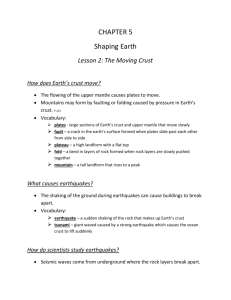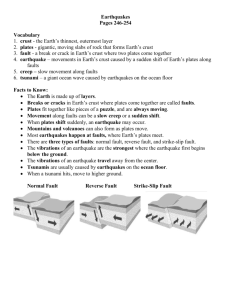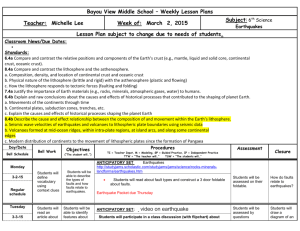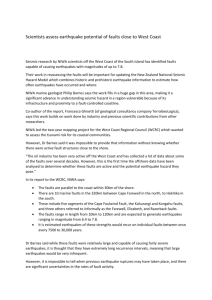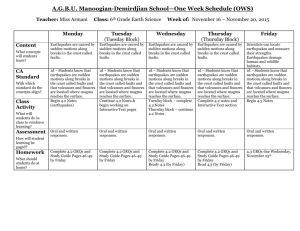Jasmin M. Bustamante Mrs. Biscocho G8
advertisement
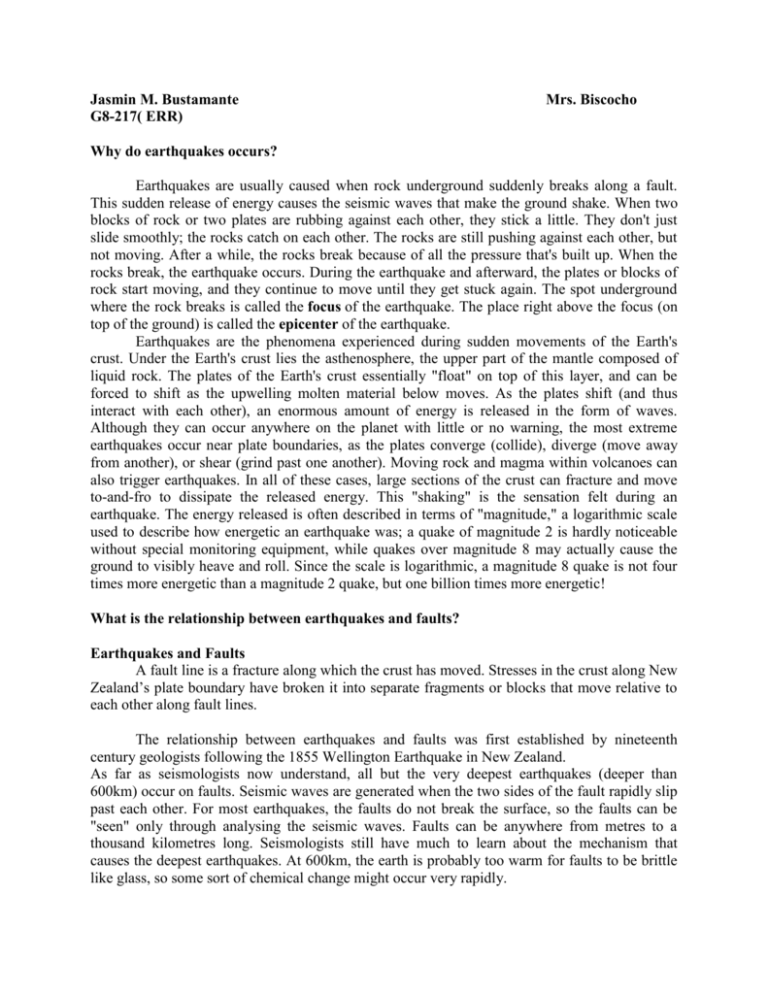
Jasmin M. Bustamante G8-217( ERR) Mrs. Biscocho Why do earthquakes occurs? Earthquakes are usually caused when rock underground suddenly breaks along a fault. This sudden release of energy causes the seismic waves that make the ground shake. When two blocks of rock or two plates are rubbing against each other, they stick a little. They don't just slide smoothly; the rocks catch on each other. The rocks are still pushing against each other, but not moving. After a while, the rocks break because of all the pressure that's built up. When the rocks break, the earthquake occurs. During the earthquake and afterward, the plates or blocks of rock start moving, and they continue to move until they get stuck again. The spot underground where the rock breaks is called the focus of the earthquake. The place right above the focus (on top of the ground) is called the epicenter of the earthquake. Earthquakes are the phenomena experienced during sudden movements of the Earth's crust. Under the Earth's crust lies the asthenosphere, the upper part of the mantle composed of liquid rock. The plates of the Earth's crust essentially "float" on top of this layer, and can be forced to shift as the upwelling molten material below moves. As the plates shift (and thus interact with each other), an enormous amount of energy is released in the form of waves. Although they can occur anywhere on the planet with little or no warning, the most extreme earthquakes occur near plate boundaries, as the plates converge (collide), diverge (move away from another), or shear (grind past one another). Moving rock and magma within volcanoes can also trigger earthquakes. In all of these cases, large sections of the crust can fracture and move to-and-fro to dissipate the released energy. This "shaking" is the sensation felt during an earthquake. The energy released is often described in terms of "magnitude," a logarithmic scale used to describe how energetic an earthquake was; a quake of magnitude 2 is hardly noticeable without special monitoring equipment, while quakes over magnitude 8 may actually cause the ground to visibly heave and roll. Since the scale is logarithmic, a magnitude 8 quake is not four times more energetic than a magnitude 2 quake, but one billion times more energetic! What is the relationship between earthquakes and faults? Earthquakes and Faults A fault line is a fracture along which the crust has moved. Stresses in the crust along New Zealand’s plate boundary have broken it into separate fragments or blocks that move relative to each other along fault lines. The relationship between earthquakes and faults was first established by nineteenth century geologists following the 1855 Wellington Earthquake in New Zealand. As far as seismologists now understand, all but the very deepest earthquakes (deeper than 600km) occur on faults. Seismic waves are generated when the two sides of the fault rapidly slip past each other. For most earthquakes, the faults do not break the surface, so the faults can be "seen" only through analysing the seismic waves. Faults can be anywhere from metres to a thousand kilometres long. Seismologists still have much to learn about the mechanism that causes the deepest earthquakes. At 600km, the earth is probably too warm for faults to be brittle like glass, so some sort of chemical change might occur very rapidly.





